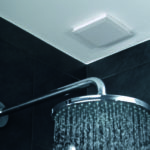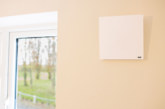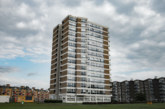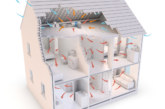 Our latest series explores the important role correct ventilation plays in protecting housing stock — and the health of tenants. In part one, John Kelly, Marketing Manager at Airflow Developments, considers the potentially negative effects of increasingly airtight homes.
Our latest series explores the important role correct ventilation plays in protecting housing stock — and the health of tenants. In part one, John Kelly, Marketing Manager at Airflow Developments, considers the potentially negative effects of increasingly airtight homes.
Published in August 2018, the Government’s Social Housing Green Paper, A New Deal for Social Housing, reviewed the Decent Homes Standard and posed the question — what changes need to be made to ensure it delivers the highest standards to social housing residents? Since its introduction in 2004, the Decent Homes Standard has driven significant improvement in the standard of social housing stock. Many social housing providers have invested heavily in improving the levels of insulation and the quality of windows in their homes, in an effort to improve the living conditions of their tenants. As such, the Green Paper found that non-decent homes made up 13% of all social housing in 2016; this is down from 20% in 2010.
Although the Decent Homes Standard has instigated considerable progress, the government is right to question if more can be done to ensure all homes are safe and decent. As an industry, we should welcome the advances that it represents but also be aware that there is much more that needs to be done if we are to ensure all homes are delivered and maintained to a decent standard.
Whilst upgrades have benefitted tenants’ thermal comfort and reduced fuel bills, they also mean that homes are becoming increasingly airtight, which can — if ventilation is not properly considered — have a detrimental effect on indoor air quality.
Whilst a sealed building will keep energy bills down and increase the comfort of the building’s occupants, it can also be more susceptible to damp, mould and condensation — especially in areas such as kitchens and bathrooms where higher levels of moisture are generated through cooking and bathing. Without effective ventilation, this can cause the building fabric to deteriorate and result in time-consuming and costly remedial work for social housing providers.
Perhaps more concerning than the effect poor indoor air quality has on the fabric of a property is its consequences on occupant health. With people spending an estimated 90% of their time indoors and a range of pollutants found within the air in British homes, including Carbon Monoxide, Radon, Volatile Organic Compounds and Nitrogen Dioxide, there is a real risk to occupant health, including major conditions such as cancer, asthma, heart disease and even obesity — all of which can all be linked to poor air quality.
With this in mind, it is crucial that social housing providers take affirmative action to protect their residents. In the Green Paper’s conclusions of Chapter 1, the Government asks, ‘Do we need additional measures to make sure social homes are safe and decent?’.
The answer is yes, and effective ventilation is a key component.
For further information on Airflow visit their website or follow on Twitter @airflowD










